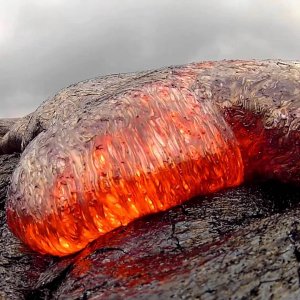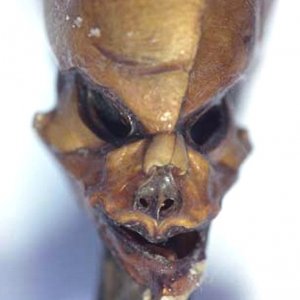More than 2.5 million light-years from Earth, the Andromeda galaxy is our Milky Way’s de facto twin. The two galaxies carry similar masses and swirl through space with graceful spiral arms.
And if three Russian astronomers are right, Andromeda also shares a surprising skill with the Milky Way: a talent for blowing giant bubbles that glow with gamma rays
Until now these billowing lobes, nicknamed Fermi bubbles after the NASA telescope used to spot them, had only been seen coming from the Milky Way. And before the bubbles’ inadvertent discovery in 2010, few even suspected such odd cosmic structures existed.
Finding them coming from Andromeda could help scientists figure out how and why galaxies might form the strange twin puffs.
“It could mean that all of the galaxies like ours could produce these Fermi bubbles,” says study leader Maxim Pshirkov of Moscow State University. “If you have only one example, it could be a unique case. But if you have several, then it means you have a whole new class of high-energy astrophysical phenomena.”
Astronomers already knew that supermassive black holes at the cores of other galaxies are active eaters, and they fling off towering jets of high-energy particles as they feed. By comparison, the Milky Way’s central black hole is an underfed pip-squeak, making it surprising that it would emit any jets at all, says Fermi bubble co-discoverer Tracy Slatyer of MIT.
“Our black hole is just not doing very much at present,” she adds.
Instead, some theories say that the bubbles, each about 30,000 light-years long, are a “galactic wind” of high-energy particles blown out from the Milky Way’s hectic center. Or they could be cosmic burps, clouds of energized particles belched out by the galaxy’s central black hole.
In that case, those burps must have come from meals served millions of years ago, and the gamma ray puffs are echoes of a time when our galaxy was a much more voracious eater.
Halo Hunt
Much like the astronomers who found the Milky Way’s bubbles, Pshirkov wasn’t initially looking for lobes coming from Andromeda’s middle. Instead, he was hunting for a disk-shaped halo of gamma rays around the galaxy. Scientists think such halos form when cosmic rays collide with matter on galactic outskirts, and Pshirkov wanted to study the process.
To measure Andromeda’s gamma ray glow, Pshirkov and his colleagues downloaded seven years’ worth of archival data from NASA’s Fermi Gamma-ray Space Telescope, then drilled down to the 600 to 700 gamma ray records that could be traced back to Andromeda’s small patch of sky.
But once they started analyzing the gamma rays’ origins, the halo they expected to see around Andromeda didn’t emerge. The gamma rays were simply too unevenly distributed for their models to make much sense.
Disappointed, the team began steps to publish their results—until a reviewer suggested testing for Fermi bubbles, which would look like two circles of gamma rays above and below Andromeda’s galactic disk.
An illustration shows the Fermi bubbles extending from the Milky Way, based on gamma ray and X-ray data.
Illustration by NASA's Goddard Space Flight Center
When the team reran the analysis, the Fermi bubble model smoked the competition, doing a much better job of explaining the existing data than any of their other efforts. If the new analysis holds up, Andromeda is decorated with twin lobes each reaching nearly 20,000 light-years tall.
“The success just popped out,” Pshirkov recalls. “It wasn’t a joy—it was a relief.” The results were published in March in Monthly Notices of the Royal Astronomical Society Letters.
Building the Case
Pshirkov is the first to acknowledge, however, that his team’s analysis isn’t the final word on whether Andromeda has a thing for blowing bubbles.
It’s possible that their signal is contaminated by gamma rays from the Milky Way or by as-yet unidentified sources of gamma rays in front of or behind Andromeda. The team took the best steps they could to account for these possibilities, he says, but the case is still circumstantial.
Slatyer recommends looking at Andromeda in other wavelengths, such as X-rays, which should also be produced by Fermi bubbles. If the bubbles exist, an X-ray snapshot would offer scientists a higher-resolution look at them, because X-rays are easier to spot using today’s tools, adds Regina Caputo of the University of California, Santa Cruz.
The problem is that no known material can reflect gamma rays—the high-energy photons just break apart most anything they hit. Instead, telescopes like Fermi must let the rays collide with certain other materials and then use the resulting carnage to reconstruct the photons’ flight paths. The complex process makes images of faraway objects like Andromeda unavoidably fuzzy, Caputo says.
For all the challenges, though, we won’t have to wait long for a second opinion on Andromeda’s bubbles. The Fermi-LAT Collaboration, a major gamma ray astronomy consortium, is conducting its own analysis of data from our near neighbor, which should appear later this year.
Follow Michael Greshko on Twitter.
Michael Greshko writes online science news stories on everything from animal behavior to space and the environment.






